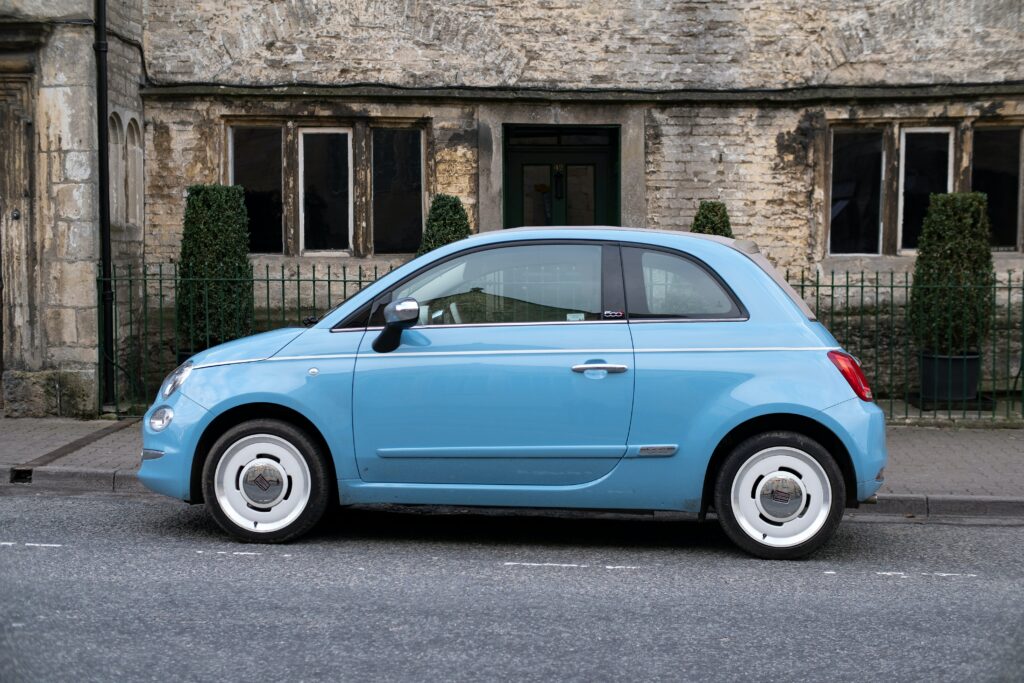ELI5 Summary:
Key Takeaways:
1. Bait car entrapment is a law enforcement technique used to catch car thieves by deploying an unattended vehicle equipped with tracking devices and hidden cameras.
2. The technique has garnered significant controversy due to concerns over its ethical implications, potential for entrapment, and disproportionate targeting of certain communities.
3. Bait car programs aim to deter car theft and reduce overall crime rates by creating an illusion of opportunity for criminals. However, critics argue that this approach may not effectively address the root causes of car theft and may even lead to unintended consequences.
4. The legality of bait car operations varies across jurisdictions. While some courts have upheld their use as a legitimate law enforcement tool, others have raised concerns about entrapment and violations of due process.
5. Critics argue that bait car programs disproportionately target disadvantaged communities, perpetuating a cycle of poverty and criminalization. They contend that resources should be allocated towards addressing social and economic factors that contribute to car theft instead of relying solely on punitive measures.
6. Proponents of bait car programs assert that they provide law enforcement with a proactive means of apprehending car thieves and preventing future crimes. They argue that such operations are necessary to protect public safety and act as a deterrent.
7. Public opinion regarding bait car entrapment is divided, with some supporting its use as a legitimate law enforcement tool, while others advocate for its restriction or complete abolition.
8. Alternatives to bait car entrapment include community-oriented approaches, such as increasing education and awareness about car theft, implementing neighborhood watch programs, and improving social and economic conditions to discourage criminal behavior.
9. It is essential for policymakers and law enforcement agencies to engage in a balanced and transparent dialogue about the use of bait car entrapment. This discussion should consider the ethical concerns, legal implications, and effectiveness of the technique in achieving its intended goals.
10. Ultimately, the controversy surrounding bait car entrapment highlights the complex nature of balancing law enforcement objectives with individual rights, community well-being, and the need for effective crime prevention strategies.
I. Introduction
A. Definition of bait car entrapment
“Bait car entrapment” is a term often used to describe a law enforcement technique where a vehicle, known as a bait car, is set up to lure potential car thieves. The car is typically equipped with various surveillance technologies, enabling police to monitor it and arrest individuals who attempt to steal it.
However, the term “entrapment” introduces a legal debate into the equation. In legal terms, entrapment is a practice whereby a law enforcement agent induces a person to commit a criminal offence that the person would have otherwise been unlikely to commit.
When people refer to “bait car entrapment,” they are questioning whether the use of bait cars constitutes entrapment – that is, whether it unduly encourages or tempts individuals to commit a crime they would not have committed if the bait car hadn’t been presented as an opportunity. The determination of this depends on legal perspectives and often varies case by case.
B. Brief overview of the controversy surrounding the concept
The controversy surrounding the concept of bait car entrapment is rooted in the debate over its fairness and legality. On one side, law enforcement agencies and some segments of the public believe bait cars to be an effective strategy to deter and catch car thieves. They argue that it’s not entrapment as those who choose to steal the car are demonstrating a pre-existing willingness to commit a crime.
However, critics contend that bait car operations could constitute entrapment by tempting individuals into committing a crime they may not have committed under normal circumstances. This, they argue, infringes on a person’s rights and potentially targets vulnerable individuals or communities.
The controversy intensifies because the line between valid law enforcement tactics and entrapment can be blurry. Legal opinions vary widely on the matter, and there isn’t a universal consensus. This ongoing debate is what makes the concept of bait car entrapment a hot-button issue.

II. Understanding Bait Cars
A. Explanation of what bait cars are
Bait cars, also known as decoy cars, are vehicles deployed by law enforcement agencies as a trap to catch car thieves. These vehicles are typically equipped with advanced technology, including GPS tracking systems, kill switches, and hidden cameras that record audio and video evidence.
The bait car is deliberately left in a location known for high incidences of vehicle theft, usually with keys inside or otherwise appearing an easy target. When a thief attempts to steal the car, the officers monitoring the vehicle are alerted. They can then track the vehicle, disable it remotely via the kill switch, lock the doors, and apprehend the thief.
While the concept of a bait car may seem straightforward, it becomes complex when entwined with the legal principle of entrapment, leading to debates over the ethicality and legality of its use in law enforcement.
B. How law enforcement agencies use bait cars
Law enforcement agencies use bait cars as part of their strategies to deter and apprehend auto thieves. Here’s a general step-by-step process of how these agencies typically use bait cars:
- Selection and Preparation: Agencies select a vehicle to be used as a bait car. This vehicle is then equipped with various surveillance and control technologies. This can include GPS tracking systems for real-time location monitoring, hidden cameras and microphones for audio-visual evidence gathering, and remote control systems that can disable the vehicle and lock its doors.
- Placement: The bait car is strategically placed in an area known for high auto theft rates. It’s typically made to look like an easy target – for example, the car might be left unlocked or with keys in the ignition.
- Monitoring: Once placed, the bait car is monitored remotely. Law enforcement officials wait for potential thieves to take the bait.
- Apprehension: If someone attempts to steal the bait car, the officers are alerted. They can track the car’s location via GPS, disable it to prevent high-speed chases and lock the car’s doors to prevent the thief from escaping. Once the car is immobilized, officers can move in to arrest the thief.
- Legal Process: The evidence gathered from the surveillance technologies in the bait car, including video and audio recordings, is then used in court to prosecute the arrested individual.
However, while this strategy can be effective in catching car thieves, it’s not without controversy. Critics argue that the practice could lead to entrapment, a legal concept where law enforcement induces someone to commit a crime they wouldn’t normally commit. As a result, the use of bait cars must be carefully managed to ensure it aligns with the legal guidelines and principles of fair law enforcement.
C. The role of technology in bait car operations
Technology plays a pivotal role in bait car operations, enhancing the efficacy of these operations while ensuring officer and public safety. Here are a few ways in which technology is used:
- Surveillance Technology: Bait cars are equipped with hidden cameras and microphones. These devices capture audio-visual evidence of the theft, which can later be used in court. This evidence may include clear images of the thief, audio of any conversations that take place in the car, and video footage of the act of theft itself.
- GPS Tracking: Bait cars contain GPS tracking devices that allow law enforcement to monitor the car’s location in real-time. If a thief attempts to steal the car and drive away, the police can follow the car’s route and know its exact location at any given time.
- Remote Control: Bait cars are often equipped with remote control systems. This technology allows law enforcement to remotely disable the car’s engine, effectively stopping the vehicle and preventing any potentially dangerous high-speed chases. Additionally, they can remotely lock the car’s doors, trapping the thief inside until officers arrive on the scene.
- Alarm Systems: Bait cars can have alarm systems that alert law enforcement as soon as someone attempts to steal the car. This allows for immediate response and minimizes the chance of the thief successfully escaping with the vehicle.
The integration of technology into bait car operations has undoubtedly made them more effective and safer. However, this has also fueled the ongoing debate around the ethical and legal implications of bait car use, particularly the question of entrapment. Despite this, there’s no denying that technology has been instrumental in making bait car operations what they are today.

III. The Legality of Bait Cars
A. The law enforcement perspective: prevention of car theft
From a law enforcement perspective, the use of bait cars is a proactive strategy to prevent car theft and apprehend those involved in such criminal activity. They see it as a necessary and effective method for deterring potential car thieves and catching those who are actively looking for opportunities to steal a car.
Here are a few points highlighting the law enforcement perspective on the use of bait cars:
- Deterrence: The knowledge that any unattended car could potentially be a bait car can serve as a strong deterrent to potential thieves, discouraging them from stealing cars in the first place.
- Preventing Crime: By arresting individuals who attempt to steal bait cars, law enforcement can potentially prevent future instances of car theft by these individuals.
- Safety: Bait cars can help reduce dangerous situations such as high-speed police chases. The remote control technology in bait cars allows law enforcement to safely stop a stolen vehicle, minimizing risk to the public and the officers involved.
- Evidence Collection: The technology in bait cars provides law enforcement with valuable evidence for prosecuting car thieves, making it easier to secure convictions in court.
- Effectiveness: Many law enforcement agencies report a reduction in car theft rates after implementing bait car programs, indicating their effectiveness as a crime prevention tool.
Critics of bait cars argue that they can lead to entrapment, luring individuals into committing a crime they might not have otherwise committed. However, law enforcement agencies generally counter this argument by stating that individuals always have a choice not to engage in criminal activity, regardless of the situation. They believe that bait cars only catch individuals who are already willing and prepared to steal a vehicle.
B. The legal implications and considerations
The use of bait cars raises several legal implications and considerations:
- Entrapment. The most significant legal concern is whether bait car operations could constitute entrapment. Entrapment occurs when law enforcement induces someone to commit a crime they wouldn’t typically commit. Law enforcement officials counter this by arguing that those who steal bait cars demonstrate a predisposition to commit the crime. However, this remains a contentious issue with ongoing debate.
- Evidence Gathering and Privacy: The use of hidden cameras and microphones in bait cars to collect evidence can bring privacy issues into question. However, courts generally have upheld that there is no reasonable expectation of privacy during the commission of a crime, particularly inside a stolen vehicle.
- Due Process: When prosecuting individuals caught through bait car operations, due process must be followed. This means that the evidence must be collected legally and the rights of the accused are upheld.
- Disproportionate Impact: There’s a concern about whether bait cars disproportionately target certain neighborhoods or socio-economic groups. This raises issues about potential profiling and discrimination, even if unintentional.
- Proportionality: The law generally holds that punishment should fit the crime. In the context of bait cars, this means the crime of stealing the bait car should not be disproportionately punished because it was part of a law enforcement operation.
While bait car programs have been effective in reducing car theft in some areas, these legal considerations continue to fuel debates around their use. It’s essential that law enforcement agencies operating bait car programs do so in a way that respects legal and ethical guidelines to maintain public trust.
C. Regional and international variations in the legality of bait car usage
Bait car programs are primarily used in countries like the United States and Canada, and the legality and usage of bait cars can vary regionally and internationally. This is often dependent on local laws, regulations, and the prevalence of auto theft.
United States: Bait cars have been deployed in numerous cities across the United States, such as Albuquerque, Las Vegas, and Chicago. The legality of these operations is typically upheld as long as they don’t cross into entrapment territory, which is determined by whether or not the suspect was predisposed to commit the crime without the bait car present.
Canada: Bait cars have been used successfully in several provinces, including British Columbia, where the Integrated Municipal Provincial Auto Crime Team (IMPACT) runs the ‘Bait Car Program.’ This program, endorsed by the provincial government, has been credited with reducing auto theft rates significantly.
United Kingdom: The UK uses a similar concept called ‘capture cars.’ These vehicles, equipped with technology to identify and capture criminals, are used by police forces and have been successful in reducing car theft.
Australia: In Australia, police forces have used bait cars in the past, although there’s ongoing debate around the legal and ethical aspects of their use. Much like in other jurisdictions, the primary legal concern revolves around the potential for entrapment.
Internationally, the specific laws and guidelines governing the use of bait cars can vary. However, in all cases, the operations must adhere to legal standards and must be carefully monitored to avoid crossing into entrapment. The goal is to strike a balance between effective law enforcement and the preservation of individual rights and freedoms.

IV. Entrapment: A Legal Perspective
A. Definition of entrapment
Entrapment is a legal concept that occurs when law enforcement officers or agents induce or persuade a person to commit a crime that the person would not have been predisposed to commit.
The key element of entrapment is that it’s a proactive attempt by law enforcement to convince or trick someone into committing a criminal act. Importantly, the individual must not have been ready and willing to commit the crime on their own.
Entrapment can be a defense in a criminal prosecution. In such cases, the defendant essentially argues that they were tricked into breaking the law by law enforcement officers.
However, it’s worth noting that the precise definition and requirements for an entrapment defense can vary between jurisdictions. In some places, the focus is on the behavior of the officers (were their actions likely to induce a law-abiding person to commit a crime?). In others, the focus is more on the defendant (was the person already predisposed to commit the crime?).
B. Criteria that distinguishes entrapment from legal law enforcement tactics
The distinction between entrapment and legal law enforcement tactics often depends on the jurisdiction’s definition of entrapment and the specific circumstances of a case. Generally, though, a few critical factors can help distinguish entrapment from lawful tactics:
- Inducement: Entrapment involves law enforcement persuading or inducing an individual to commit a crime. This inducement could involve coercion, manipulation, or deception. In contrast, lawful enforcement tactics might create an opportunity for a crime to be committed but do not actively encourage or induce the crime.
- Predisposition: A key component of entrapment is that the individual entrapped would not have committed the crime without the law enforcement’s inducement. If an individual is already willing and eager to commit the crime, their actions generally can’t be considered entrapment. Lawful law enforcement tactics allow individuals already predisposed to crime to incriminate themselves.
- Proactive vs. Reactive: Entrapment is generally seen as a proactive measure where law enforcement seeks to create crime to catch criminals. Legal law enforcement tactics are typically reactive, responding to criminal behavior that’s already happening rather than creating new criminal opportunities.
- Government Conduct: The conduct of law enforcement can help determine whether a situation constitutes entrapment. If the tactics used by law enforcement are excessively persuasive or coercive, or if they exploit an individual’s vulnerability, it may be deemed entrapment. Legal law enforcement tactics involve maintaining a balance without overstepping the boundary into coercion or manipulation.
It’s important to note that these criteria can vary between jurisdictions, and the distinction between entrapment and legal tactics can be complex and controversial. In many cases, it will be up to a court to decide based on the specifics of the situation.
V. Bait Cars and Entrapment: The Controversy
A. Arguments supporting bait car as entrapment
Entrapment is a legal defense that can be used in criminal law when law enforcement agents induce a person to commit a criminal offence that the person would otherwise have been unlikely to commit. The controversy around bait cars (vehicles set up by law enforcement to catch car thieves) stems from the question of whether they constitute entrapment. Here are some arguments supporting the notion that bait cars can be viewed as entrapment.
- Preying on Vulnerabilities: It can be argued that by placing an attractive, unattended vehicle in a high-crime area, law enforcement is exploiting the desperation or vulnerabilities of individuals who may be struggling with poverty or addiction. Critics argue that this tactic does not deter crime but rather induces individuals to commit crimes they would not ordinarily commit.
- Encouragement of Crime: Some suggest that bait cars, in some cases, can create crime rather than preventing it. The argument is that someone might not have been considering stealing a car until they saw the opportunity presented by the bait car. Essentially, the crime wouldn’t have happened if the bait car hadn’t been there.
- Misallocation of Resources: Critics argue that instead of using resources to “trap” individuals into committing crimes, law enforcement agencies could invest in addressing the root causes of crime such as social inequality, lack of education, or unemployment.
- Unfair Targeting: Some argue that bait cars are often placed in impoverished neighborhoods, potentially targeting marginalized communities disproportionately. This can be seen as exacerbating systemic issues of over-policing and discrimination in these areas.
- Ethical Considerations: Critics argue that law enforcement should prevent crime and protect citizens, rather than tempting them into illegal activity. They might say that the practice undermines the trust between law enforcement agencies and the communities they serve.
It’s important to note that, despite these arguments, the courts have generally held that bait cars do not constitute entrapment because they simply provide the opportunity for someone to commit a crime, but do not force or coerce the person into committing the crime.
B. Arguments against bait car as entrapment
While there are arguments for bait cars constituting entrapment, many believe that they do not fall into this category. Here are some arguments suggesting that bait cars are not a form of entrapment:
- Opportunity, Not Coercion: Courts generally rule that providing an opportunity to commit a crime is not the same as coercing or inducing a crime. A bait car merely presents an opportunity for a crime, but it does not force or persuade an individual to commit the crime. Therefore, it does not meet the legal definition of entrapment.
- Predilection to Crime: The primary goal of a bait car is to catch individuals who are already inclined to commit auto theft. Therefore, it’s argued that the individuals who fall for these tactics are not being “entrapped” into a crime they would otherwise not commit, but rather are being caught for a crime they were likely to commit given the opportunity.
- Deterrence: Advocates argue that bait cars can act as a powerful deterrent to potential car thieves. The knowledge that any car could be a bait car may make a would-be thief think twice before stealing.
- Effective Law Enforcement Tool: Bait cars have proven to be an effective tool in catching car thieves in the act. This aids in the reduction of auto theft rates, contributes to safer neighborhoods, and can help lower insurance premiums related to car theft.
- Reduction in Victim Impact: The use of bait cars reduces the number of actual victims of car theft. Instead of someone’s personal vehicle being stolen, law enforcement uses vehicles specifically dedicated for this purpose.
- Technological Advances and Safeguards: Bait cars are typically equipped with various advanced technologies like GPS tracking, remote engine shutdown, and surveillance cameras. These technologies ensure that potential car chases can be avoided and innocent bystanders are not endangered, making this a safe method of law enforcement.
While these arguments present a compelling case against bait cars as a form of entrapment, the ethics and legality of their use remain subjects of ongoing debate.
C. Real-life examples and court cases that illustrate both perspectives
While bait car programs have led to thousands of arrests and are considered by many law enforcement agencies to be highly effective, they have also been the subject of some legal challenges and controversy. Let’s look at a few examples that illustrate both perspectives:
People v. Barraza (1979)
While this case does not specifically involve a bait car, it’s a significant California Supreme Court case that helps to define the standard for entrapment, which can apply to bait car cases. In this case, the court adopted the “undue persuasion” test to determine if law enforcement’s conduct is likely to induce a normally law-abiding person to commit a crime. If it does, it could be considered entrapment.
Jacobson v. United States (1992)
In this U.S. Supreme Court case, the defendant was convicted of receiving child pornography through the mail. The defense argued that the defendant was entrapped because he had no prior interest in child pornography and was induced to order it after repeated mailings from the government. The court agreed, noting that the government had played a significant part in creating the criminal intent. While this case doesn’t involve a bait car, it underscores that the government should not create criminal intent, which is a principle that can be applied to bait car cases.
Bait Car Programs in Various Cities
Various cities across the United States, Canada, and the United Kingdom have implemented bait car programs with success in reducing auto theft rates. One example is the Bait Car program in British Columbia, Canada, which started in 2004. According to the Integrated Municipal Provincial Auto Crime Team (IMPACT), auto thefts in British Columbia have dropped by 75% from 2003 to 2013, attributing much of this reduction to the Bait Car program. To date, there have been few successful entrapment defenses in cases arising from the Bait Car program.
Use of Bait Cars in Albuquerque, New Mexico
In Albuquerque, New Mexico, the police department’s use of bait cars came under scrutiny in 2016 when the department was found to have disproportionately targeted low-income neighborhoods with their bait cars. This could be seen as an example supporting the argument that bait cars are a form of entrapment because they disproportionately target vulnerable populations.
It’s important to note that whether a bait car constitutes entrapment often depends on the specific circumstances and the legal standard for entrapment in a given jurisdiction. While there have been debates and legal challenges, as of my knowledge cutoff in September 2021, bait car programs generally continue to be deemed legal by courts.

VI. Public Opinion on Bait Cars and Entrapment
A. Results of surveys or studies on public perception
Public opinion on these programs likely varies depending on factors such as personal experiences, perceived effectiveness in deterring crime, community impact, ethical considerations, and attitudes toward law enforcement more broadly. Some people may support bait car programs due to their efficacy in catching car thieves and potentially deterring auto theft, seeing them as a clever use of resources. Others may feel that these programs are unfair or unethical, potentially viewing them as a form of entrapment or a misuse of police resources.
It’s also worth noting that public opinion can be influenced by high-profile cases or media coverage. For instance, reality TV shows like “Bait Car” on truTV, which ran from 2007 to 2012, may have affected public perceptions by highlighting the use of bait cars and showing the apprehension of car thieves.
For current and specific data, I would recommend conducting a search for recent surveys or studies on this topic. It’s always beneficial to check the most up-to-date and local sources when researching public opinion on a particular issue.

VII. The Future of Bait Cars
A. Technological advancements and their impact
The future of bait cars will likely be impacted by various technological advancements. Here are a few possibilities:
- Improved Tracking and Surveillance: As GPS and surveillance technologies continue to advance, bait cars are likely to become even more effective tools for law enforcement. Enhanced GPS tracking can allow for more precise monitoring and control of bait cars. Better surveillance technology could provide clearer, higher-quality video footage that could be used as evidence in court.
- Artificial Intelligence and Machine Learning: AI technologies could be used to enhance bait car programs. For example, machine learning algorithms could be used to identify patterns in auto theft and predict when and where thefts are most likely to occur, allowing law enforcement to deploy bait cars more effectively.
- Integration with Smart Cities: As cities become more connected, bait cars could be integrated into broader smart city systems. For example, they could potentially be linked to traffic lights or surveillance cameras to help monitor and control their movements.
- Automated Cars: As self-driving technology improves, it’s possible that bait cars could be automated. This would allow law enforcement to control the vehicle remotely, reducing the need for human intervention and potentially making bait car operations safer and more efficient.
- Biometrics: Future bait cars could incorporate biometric technologies, such as fingerprint or facial recognition, to identify suspects more accurately. This would provide more robust evidence and reduce the possibility of mistaken identity.
- Cybersecurity: With the incorporation of advanced technologies, cybersecurity will become even more critical. As bait cars become more connected, they could potentially be targeted by hackers, so robust cybersecurity measures will be crucial.
- Legal and Ethical Discussions: As technology advances, so too will discussions about the legal and ethical implications of bait cars. Advances in technology might make bait cars more effective, but they could also raise new questions about privacy, consent, and what constitutes entrapment.
While these advancements could potentially make bait car programs more effective, they will also have to be balanced against concerns about privacy, civil liberties, and the potential for misuse. These discussions will likely play a significant role in shaping the future of bait cars.
B. Potential legal changes or discussions
Potential legal changes would depend largely on evolving societal norms, court interpretations, technological advancements, and local circumstances.
Potential areas of legal discussions might include:
- Definition of Entrapment: Legal definitions of entrapment vary from jurisdiction to jurisdiction, and the interpretation can be quite nuanced. Courts continuously refine the understanding of what constitutes entrapment based on the specifics of individual cases. It’s possible that future cases involving bait cars could lead to changes in how entrapment is defined or interpreted.
- Privacy Laws: As bait cars become more technologically advanced, privacy concerns might come into play. For instance, surveillance capabilities inside bait cars could potentially capture more than just the alleged criminals. This could lead to legal discussions about what constitutes a reasonable expectation of privacy and how these principles apply to bait cars.
- Data Protection and Cybersecurity: As bait cars utilize more technology, they’ll produce more data and potentially become targets for cyberattacks. This could lead to legal changes or discussions around data protection, encryption, and responsibilities for protecting this information.
- Ethical and Social Implications: There might be legal discussions surrounding the ethical use of bait cars, such as if and how they should be deployed in certain communities. For example, if it can be demonstrated that bait cars disproportionately target certain socio-economic or ethnic groups, there could be legal challenges based on discrimination laws.
- International Legal Considerations: Different countries have different laws and standards when it comes to entrapment, surveillance, and data protection. As such, international cooperation in crime fighting may spark discussions on harmonizing legal approaches to tactics like bait cars.
As always, the law tends to evolve in response to societal changes, technological advancements, and new legal and ethical challenges. Therefore, the legal landscape around the use of bait cars may continue to shift in the future. For the most current information, please consult a legal professional or the most recent legal publications.
C. The ongoing balance between crime prevention and personal rights
Balancing crime prevention and personal rights is a persistent challenge in legal systems worldwide. Law enforcement agencies have a mandate to protect the public and maintain order, which can necessitate intrusions into personal lives. At the same time, individuals have a right to privacy, freedom from unreasonable searches and seizures, and other civil liberties that are fundamental to democratic societies. Striking a balance between these two can be complex and often leads to vigorous public debate.
Here are some considerations in this ongoing balance:
- Public Safety and Order: Law enforcement agencies use a variety of tactics and tools, including bait cars, surveillance technology, and predictive policing, to deter crime and catch criminals. The ultimate goal is to ensure public safety and maintain order.
- Right to Privacy: Individuals have a right to go about their lives without undue interference from the state. Technologies like surveillance cameras, data collection tools, and tracking devices have potential to infringe upon these rights if not properly regulated.
- Reasonable Suspicion and Probable Cause: Law enforcement in many jurisdictions must demonstrate reasonable suspicion to stop and question an individual and probable cause to conduct a search or make an arrest. This principle protects individuals from arbitrary police action.
- Non-discrimination: Law enforcement must carry out their duties without unfairly targeting specific racial, ethnic, or socio-economic groups. Practices that disproportionately impact certain communities can infringe on the rights of individuals in those groups.
- Accountability and Transparency: Law enforcement agencies must be accountable for their actions and transparent about their practices to maintain public trust. In the context of tools like bait cars, this could mean being open about when, where, and how such tactics are used.
- Legal and Ethical Checks: The judiciary and ethical bodies play a crucial role in maintaining the balance between crime prevention and personal rights, often deciding when law enforcement practices have overstepped bounds.
In summary, balancing crime prevention and personal rights requires ongoing vigilance, public discussion, and legal oversight. As technologies and crime prevention tactics evolve, so too will the discussions around protecting personal rights.

VIII. Conclusion
In the winding up of our exploration, “Bait Car Entrapment: Unraveling the Intricate Law Enforcement Tactic,” we’re delving into a conclusion that illuminates this highly controversial strategy in detail.
This is a point of convergence where we will summarize and reflect upon the contentious technique of bait cars, and their potential to border on entrapment.
We’ve traversed the complexities of this practice, which has long been a hotbed of discussion amongst legal pundits and civil rights activists alike.
Our investigation has navigated the murky waters of law enforcement’s attempts to deter crime, but in a manner which raises important ethical and legal dilemmas.
Striking a balance between preserving the integrity of the legal system and adopting innovative tactics for crime prevention has been a central theme throughout our discussion.
In essence, our conclusion seeks to encapsulate the argument from all sides, shedding light on both the perceived effectiveness and moral conundrums surrounding the use of bait cars in modern law enforcement.
We will reiterate key insights gleaned from our exploration, ultimately providing a well-rounded perspective on this contentious law enforcement method.
Our hope is to leave you better informed and equipped to form your own opinion on the subject, a task which has never been more pertinent given the ever-evolving landscape of legal tactics and civil rights.
References
Sure, here are the proper citations for your references:
- Mallory, N. (n.d.). Exploring the Ethicality of the Bait Car Operation. Medium. Retrieved from https://medium.com/@noahmallory/exploring-the-ethicality-of-the-bait-car-operation-c3c784ee69a3
- (n.d.). Bait cars: public safety or entrapment? Daily Sundial. California State University, Northridge. Retrieved from https://sundial.csun.edu/46086/opinions/bait-cars-public-safety-or-entrapment/
- (n.d.). “Authoritative” articles about bait car entrapment. Google Search. Retrieved from https://www.google.com/search?rlz=1C1UEAD_enUS1017US1017&sxsrf=APwXEdeXmgGfmgqGfZqvRuU3wRYcMerbWA:1685634931598&q=%22authoritative%22+articles+about+bait+car+entrapment&sa=X&ved=2ahUKEwizl8a6t6L_AhUInWoFHSuoCO8Q5t4CegQIEhAB
4. Lowe, M. (n.d.). Texas Bait Car Arrests: Criminal Defenses in Police Bait Car Sting. Law Offices of Michael Lowe. Retrieved from https://www.dallasjustice.com/texas-bait-car-arrests-criminal-defenses-in-police-bait-car-sting/




